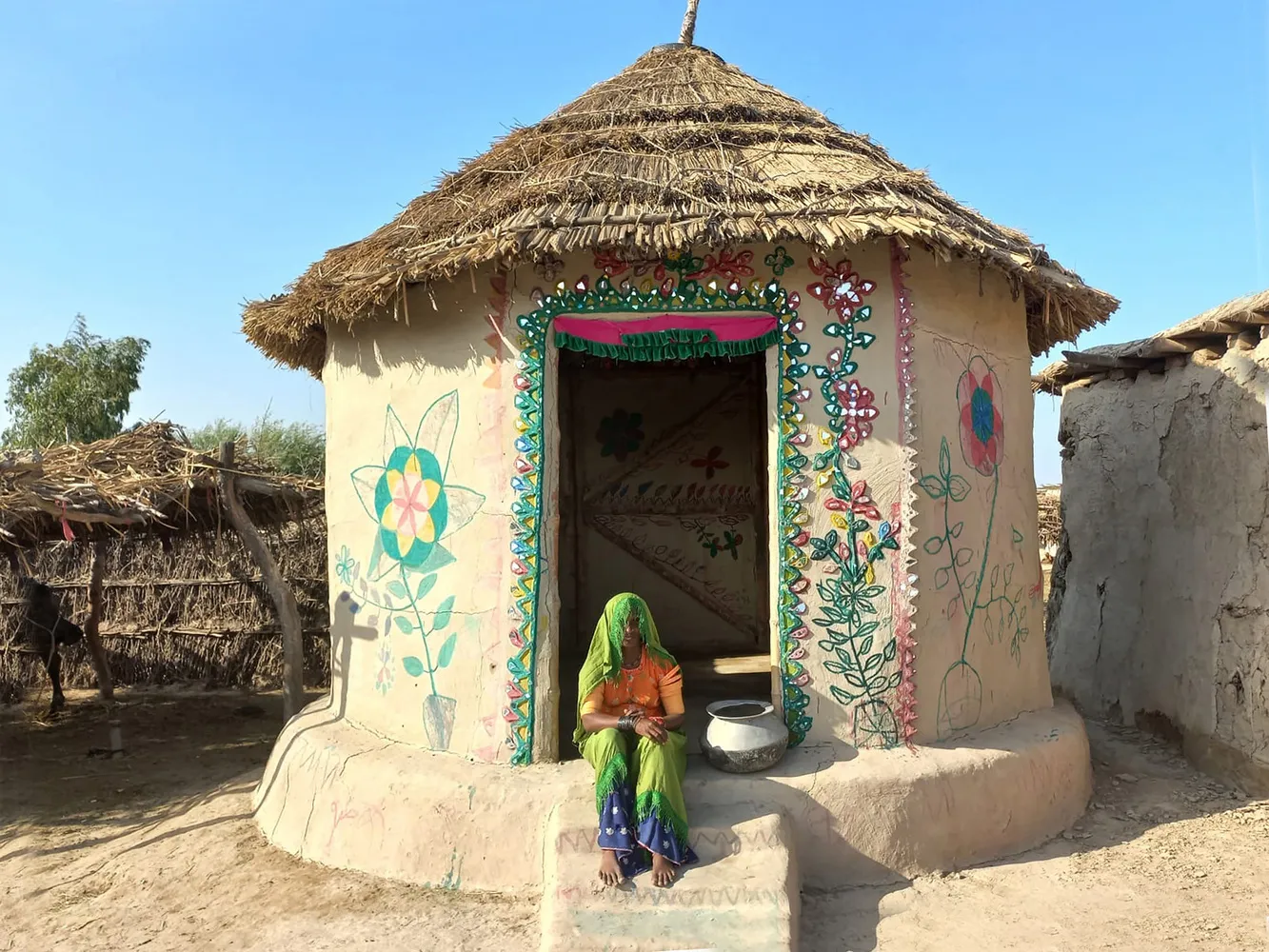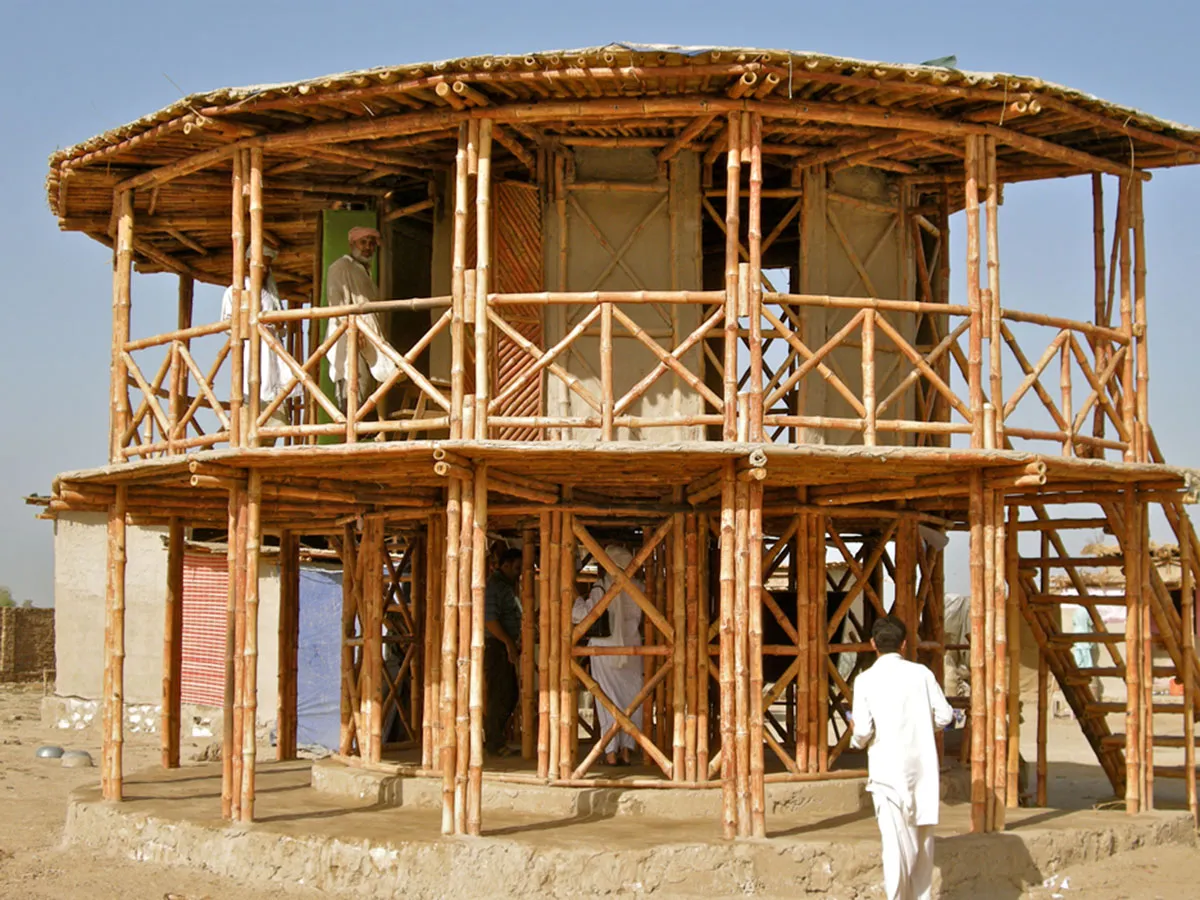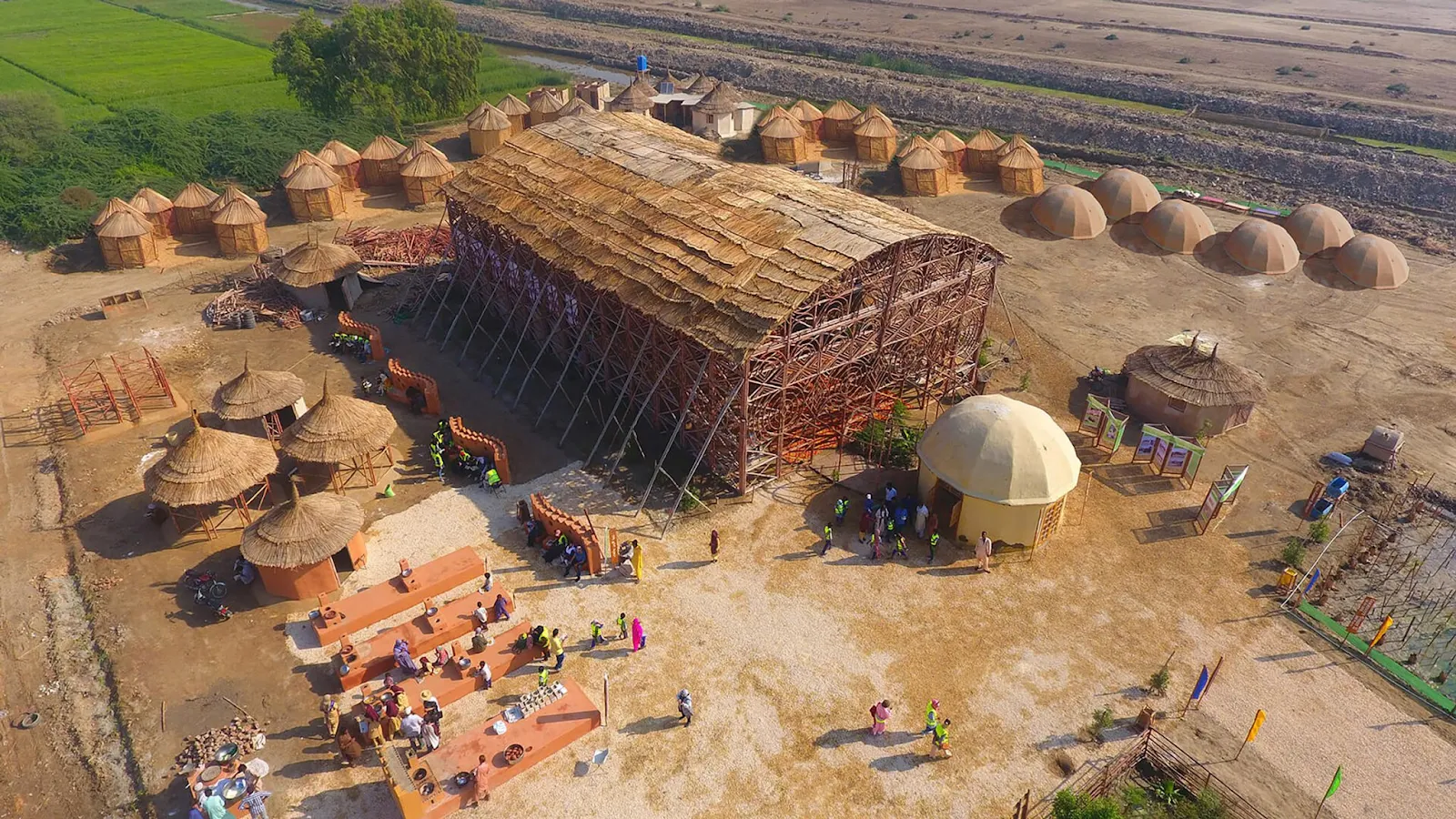by ISHA CHAUDHARY

In May 2025, celebrated architect Yasmeen Lari, Pakistan’s first woman in the field, was awarded the prestigious Lisbon Triennale Millennium bcp Lifetime Achievement Award. With a career spanning over 60 years, Lari has become a global figure in socially responsible and climate-conscious architecture, known for her commitment to empowering marginalized communities through sustainable, low-carbon design.
When Yasmeen Lari began her architectural career in the 1960s, she was already stepping into uncharted territory, Pakistan’s first woman architect, trained at the Oxford School of Architecture (now Oxford Brookes), and eager to shape a modern architectural identity for a newly independent nation. Her early commissions, headquarters, housing blocks, and institutional structures echoed the global language of modernism, translated through the materials and climate of Karachi. Concrete, glass, and steel defined her palette, and the aesthetic was distinctly cosmopolitan.

It was the 2005 Kashmir earthquake that catalyzed this transformation. Watching traditional building methods prove more resilient than many modern structures, Lari began developing a new design philosophy rooted in vernacular wisdom and social equity. What emerged was not just a technical framework, but an ethical one. She embraced a model she calls “barefoot architecture,” an approach defined by its accessibility, environmental responsibility, and refusal to centralize authority in the hands of professionals alone.
Her methodology is centered around a quartet of principles she labels the “Four Zeros”: zero carbon, zero waste, zero donor dependency, and zero poverty.

Innovative Projects and Sustainable Solutions
Lari’s dedication to sustainable architecture can be observed by her multiple designs that use materials that are accessible locally, such as mud, bamboo, lime, and thatch.
Makli’s Zero Carbon Cultural Centre is a teaching center for disaster-resistant architecture. The institute’s architecture features bamboo buildings covered in mud, resulting in economical and environmentally friendly residential choices. This project has resulted in the construction of around 600 more homes in surrounding settlements.

One more notable invention is the Pakistan Chulah Cookstove, an environmentally friendly alternative meant to mitigate the harmful effects of open-fire cooking. The stove, made of regionally obtained mud and CO2-absorbing lime plaster, decreases fuel use by 50-70% and is raised to stay stable during flooding. More than 80,000 of these stoves have been made and painted by villages, encouraging both environmental sustainability and women’s empowerment.
Parametric Architecture for more
